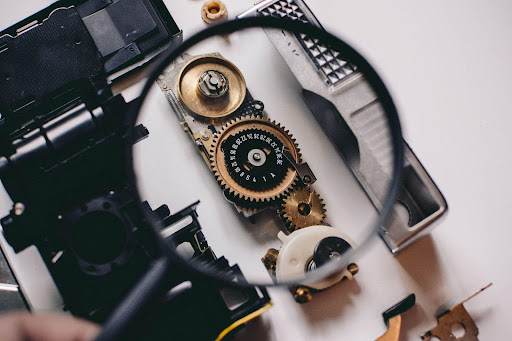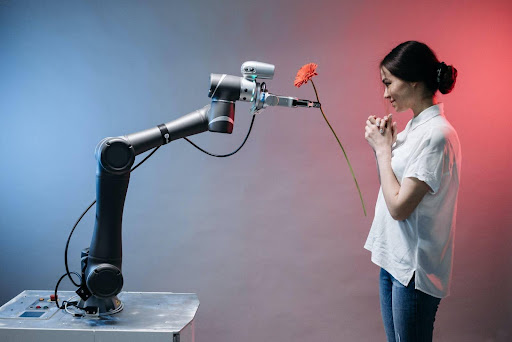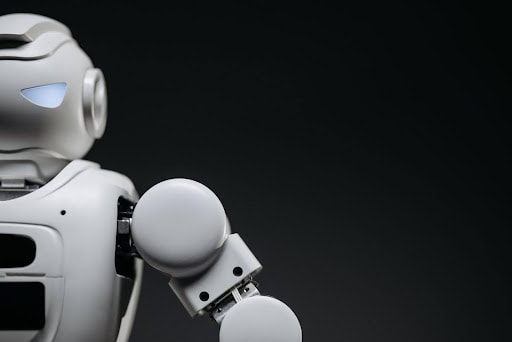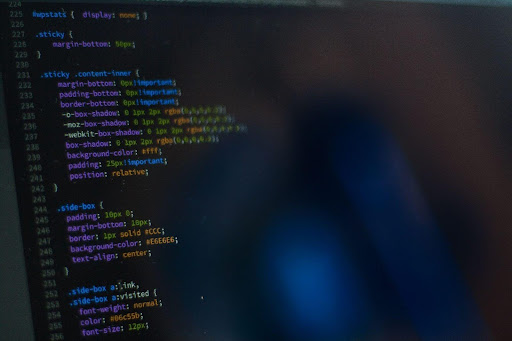Transforming Industrial Automation with the Power of IoT
Are you ready to explore the future of industrial automation? We’re about to dive headfirst into the incredible world of IoT (Internet of Things) and its game-changing role in transforming industries.
IoT is the magical glue that connects our devices and machines to the internet, allowing them to communicate with each other, share data, and work together seamlessly. Imagine your factory floor coming to life with sensors, cameras, and gadgets, all chattering away. That’s IoT at its finest!

Smart Factories: Where Efficiency Meets Excellence
Who wouldn’t want a factory that practically runs itself? Well, IoT swoops in right here to make this dream a reality. Sensors on every machine track performance and collect data at lightning speed. This treasure chest of data then helps factories optimize processes, reduce downtime, and boost productivity.
Predictive Maintenance: No More Surprise Breakdowns
Oh, the woes of unexpected breakdowns! But with IoT, those days could be left behind. Imagine receiving an alert before a machine goes kaput? IoT-enabled predictive maintenance does just that. Sensors detect anomalies, analyze patterns, and raise a timely alarm, allowing maintenance crews to intervene before disaster strikes.
Amazon, the e-commerce giant, utilizes IoT-powered predictive maintenance extensively in their warehouses to keep operations running smoothly. By equipping their machines and equipment with sensors and data analysis tools, they can predict when maintenance is needed, preventing unexpected breakdowns and optimizing their logistics operations.
For more details, check out how Amazon uses IoT for predictive maintenance.

Supply Chain Revolution: From Warehouse to Doorstep
Ever wondered how your favorite gadget goes from the factory shelf to your hands? Well, it’s because of IoT! IoT helps track inventory levels, monitor shipment conditions (temperature, humidity, etc.), and ensure the goods reach your doorstep in perfect condition. No more soggy surprises or damaged deliveries!
Safety First: Creating Secure Work Environments
Safety is non-negotiable, and IoT guarantees that. Sensors detect dangerous situations – toxic gas leaks, fires – and trigger alarms instantly. Plus, wearable tech can help monitor workers’ health, ensuring they’re safe and sound, even in the most challenging environments.

Energy Efficiency: Incorporating Green Machines in Industries
In the age of sustainability, IoT is leading the change by making industries greener. Smart lighting that adjusts to occupancy, HVAC systems that adapt to real-time needs – it’s like having your own energy manager. These energy-saving measures are a win-win for the planet and your wallet.
Real-life examples of people using IoT in factories to reduce energy bills are becoming increasingly common. For instance, consider the case of the global automotive manufacturer BMW. They’ve implemented IoT solutions in their production facilities to enhance energy efficiency.
BMW uses IoT sensors to monitor equipment and machinery, adjusting lighting, heating, and cooling systems in real-time based on occupancy and environmental conditions. This not only reduces energy consumption but also leads to significant cost savings. For instance, they’ve reduced their energy consumption in some factories by up to 47%, resulting in substantial cost reductions.
By embracing IoT-driven energy management, BMW demonstrates how smart factories can not only help protect the environment but also boost the bottom line.
Data-Driven Decision-Making: Digging the New Gold
Data is the new gold, and IoT mines it like a champ. Real-time data insights help managers make informed decisions on the fly. They can now adjust production schedules, optimize workflows, and react to market changes like never before.

Power of Personalization: Tailored for Individual Needs
In the era of customization, IoT shines bright. Imagine a production line that adapts to each customer’s specific requests. Whether it’s a unique car color or a tailor-made gadget, IoT-enabled automation makes anything possible. This has revolutionized mass production as we know it.
A fantastic case study showcasing the power of personalization through IoT-enabled automation can be found in the world of footwear manufacturing, specifically with Adidas and its “Speedfactory” initiative.
Adidas, a renowned sportswear brand, embarked on a mission to revolutionize the way they produced sneakers. Traditional manufacturing processes involved large-scale, centralized production with limited options for customization. However, with the advent of IoT and advanced automation, they set out to change this.
Adidas established “Speedfactories” in Ansbach, Germany, and Atlanta, USA, which utilized IoT technology to enable a level of personalization and flexibility previously unheard of in mass production. These factories were equipped with a vast array of sensors, cutting-edge robotics, and data analytics systems.
Customers could walk into a store or access the Adidas website, and using an app, they could personalize their sneakers in terms of style, color, and fit. The selected customization details were then relayed to the nearby Speedfactory, where advanced robots and IoT systems sprang into action.
These systems allowed for precise and rapid customization, making unique pairs of sneakers for each customer. The combination of real-time data, IoT connectivity, and automation resulted in shorter production times and a nearly limitless array of options for individual customization.
This transformation allowed Adidas to tap into the rising demand for personalized products while still maintaining efficiency and quality in their manufacturing process. The Speedfactory initiative illustrated how IoT-powered personalization can redefine the mass production landscape, creating a new era of tailored, unique products tailored to individual needs.
Data: Fuel for Innovation
Data is the gold mine of the digital age, and IoT the pickaxe. IoT floods industries with different kinds of data that can be used by businesses to identify trends, refine processes, and create new models so they can stay ahead of the curve.

Collaborative Robots: The Rise of Cobots
Robots aren’t here to steal our jobs; they’re our partners in progress! Collaborative robots, or cobots, work alongside humans, taking over the repetitive tasks and leaving the creative problem-solving to their intelligent counterparts. Thanks to IoT, these cobots are capable of communicating with one another and adapting to changes seamlessly. This makes teamwork fun and breezy.
Amazon is a prime example of how collaborative robots (cobots) are revolutionizing warehouse operations. At its massive order fulfillment centers, a vast array of robots, known as Amazon Robotics, work seamlessly alongside human workers to streamline the order-picking and packing process. These robots are not there to replace human workers but to enhance efficiency and productivity.
The Amazon Robotics system uses IoT connectivity and advanced algorithms to coordinate the movement of thousands of robots across the warehouse floor. These robots transport entire shelves of products to human workers, who then pick the required items for customer orders. Once the order is complete, the robots swiftly move the shelves to the packing area, optimizing the entire process.
The beauty of this system is that the robots don’t operate in isolation; they communicate with each other and with the central control system in real-time. They adjust their routes, speeds, and movements to avoid collisions and ensure items are delivered to workers accurately and efficiently. This level of coordination is possible due to IoT technology, enabling these cobots to work together harmoniously.
Amazon’s use of collaborative robots is a prime example of how IoT empowers these intelligent machines to collaborate, adapt, and enhance the productivity of human workers, creating a well-orchestrated dance of efficiency in their vast warehouses.
Overcoming Challenges: The Next Frontier
Every revolution is faced with its own hurdles. In this case, user security and privacy concerns take center stage. With more devices connected, vulnerability grows and the potential for breaches increases. But fear not! Developers are on the case, fortifying IoT networks with robust encryption and authentication measures.

There you have it – the happy marriage of IoT and industrial automation. From factories practically running themselves to smarter decision-making and a greener planet, IoT is propelling industries into a future we once only dreamed of. Our previous blog, exploring the revolutionary nature of automation, will deepen your understanding of the many ways in which technology can be used to simplify all kinds of industrial tasks. So, whether you’re a tech enthusiast or an industry insider, it’s time to hop onto the IoT wave and ride into a future of endless possibilities!


